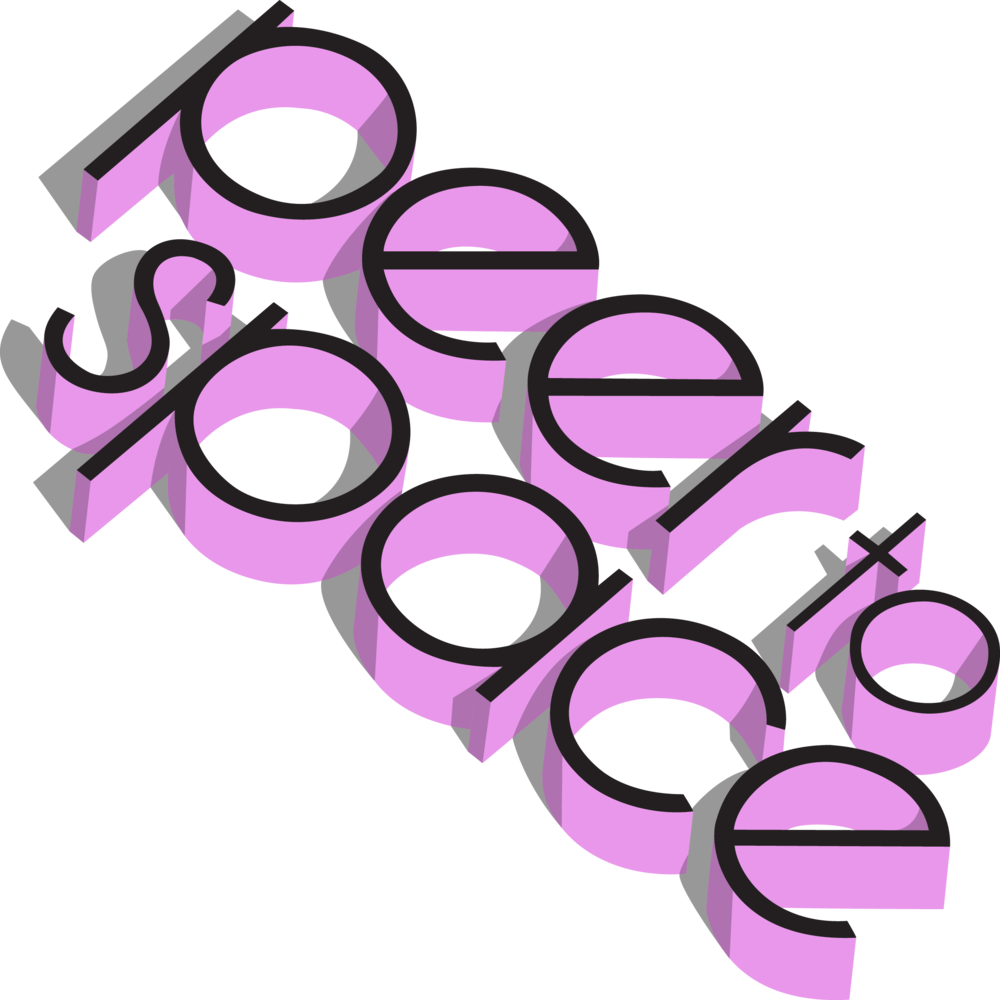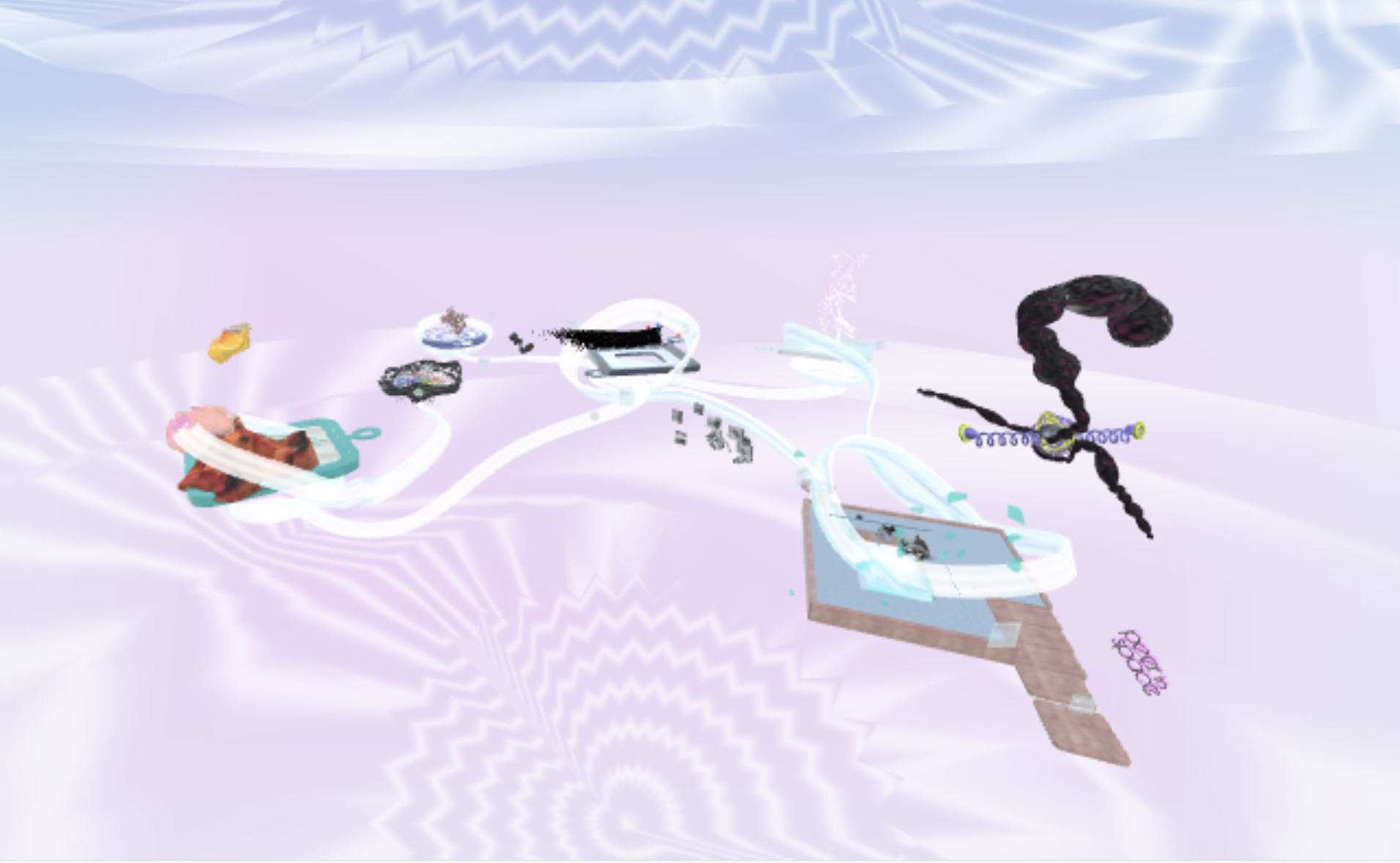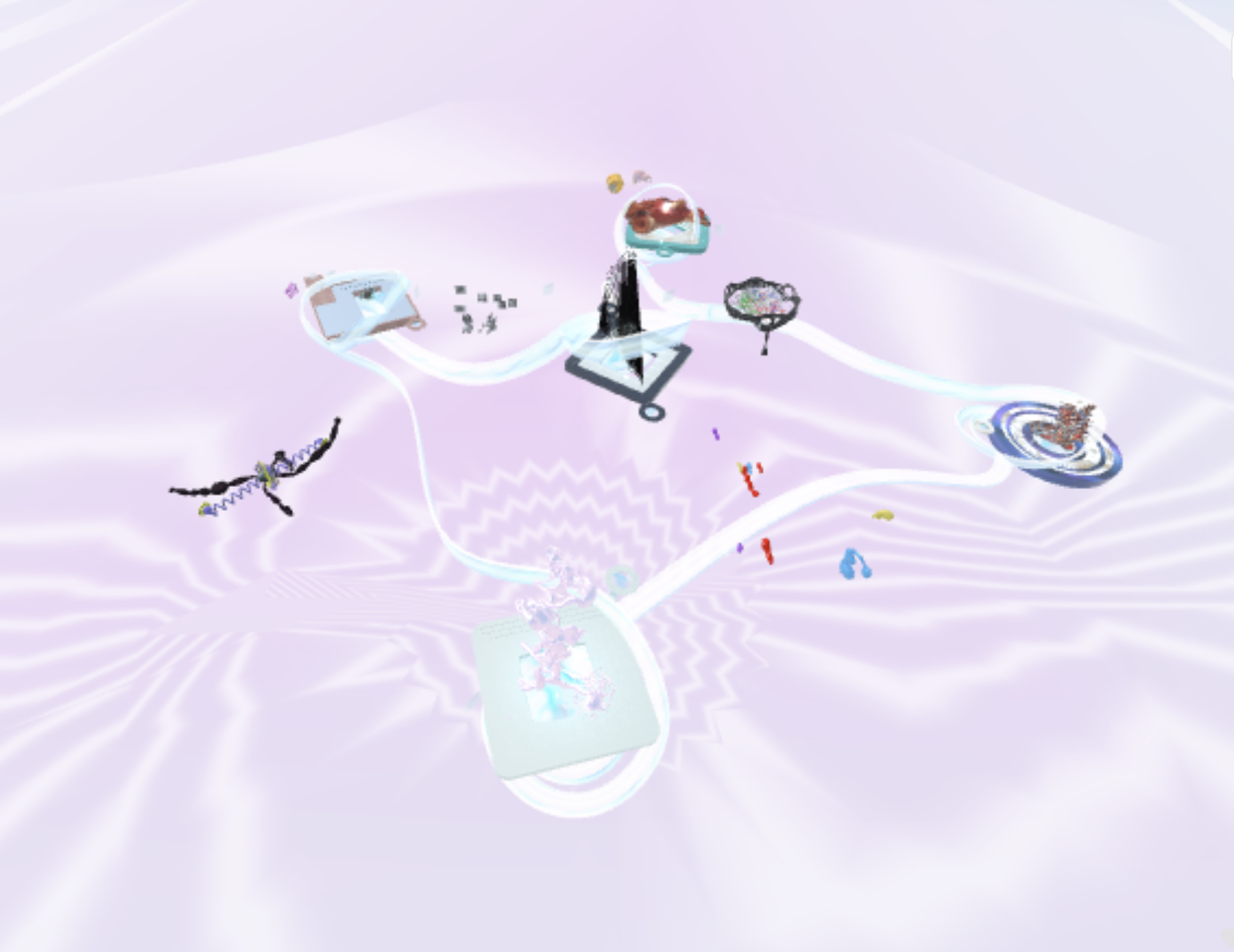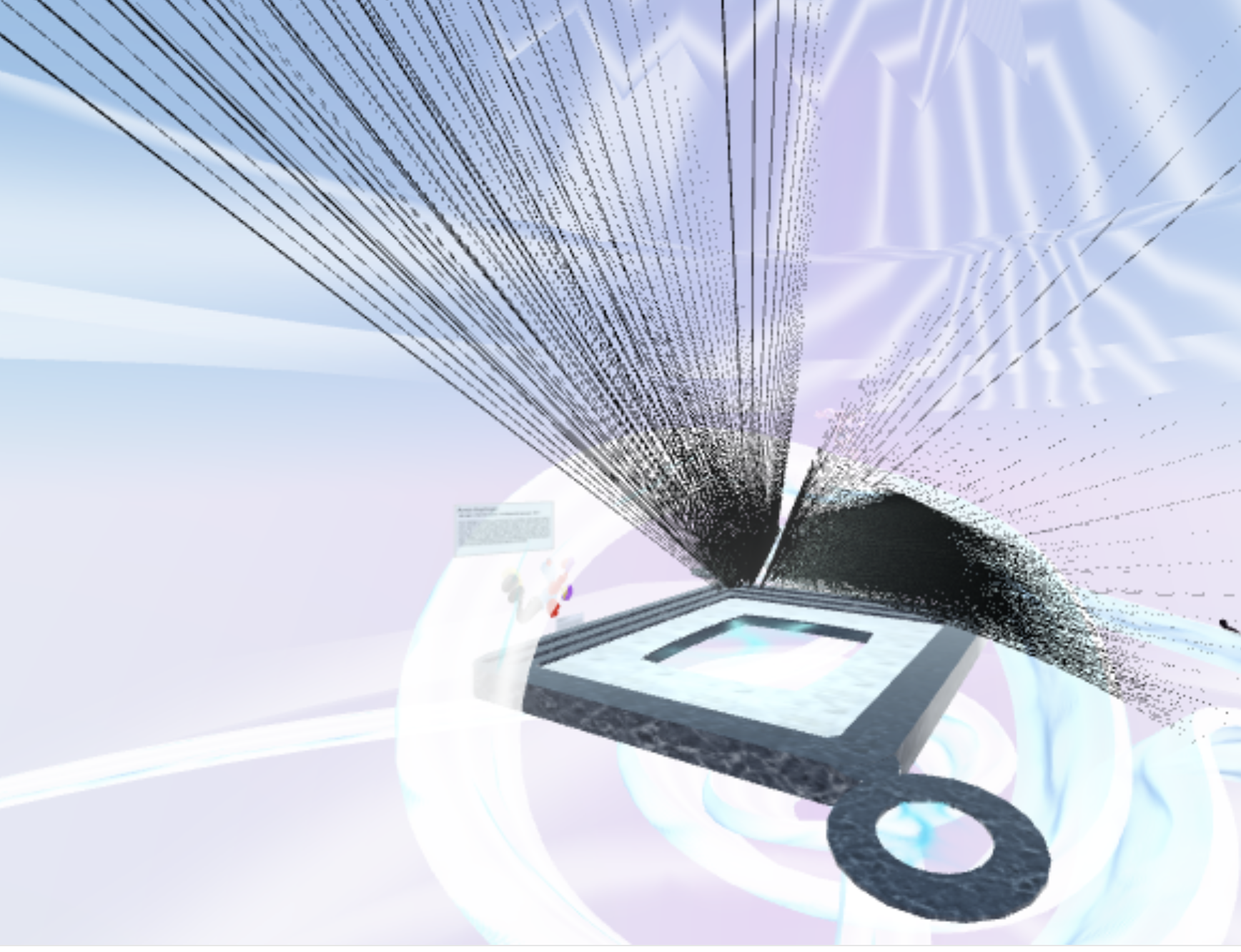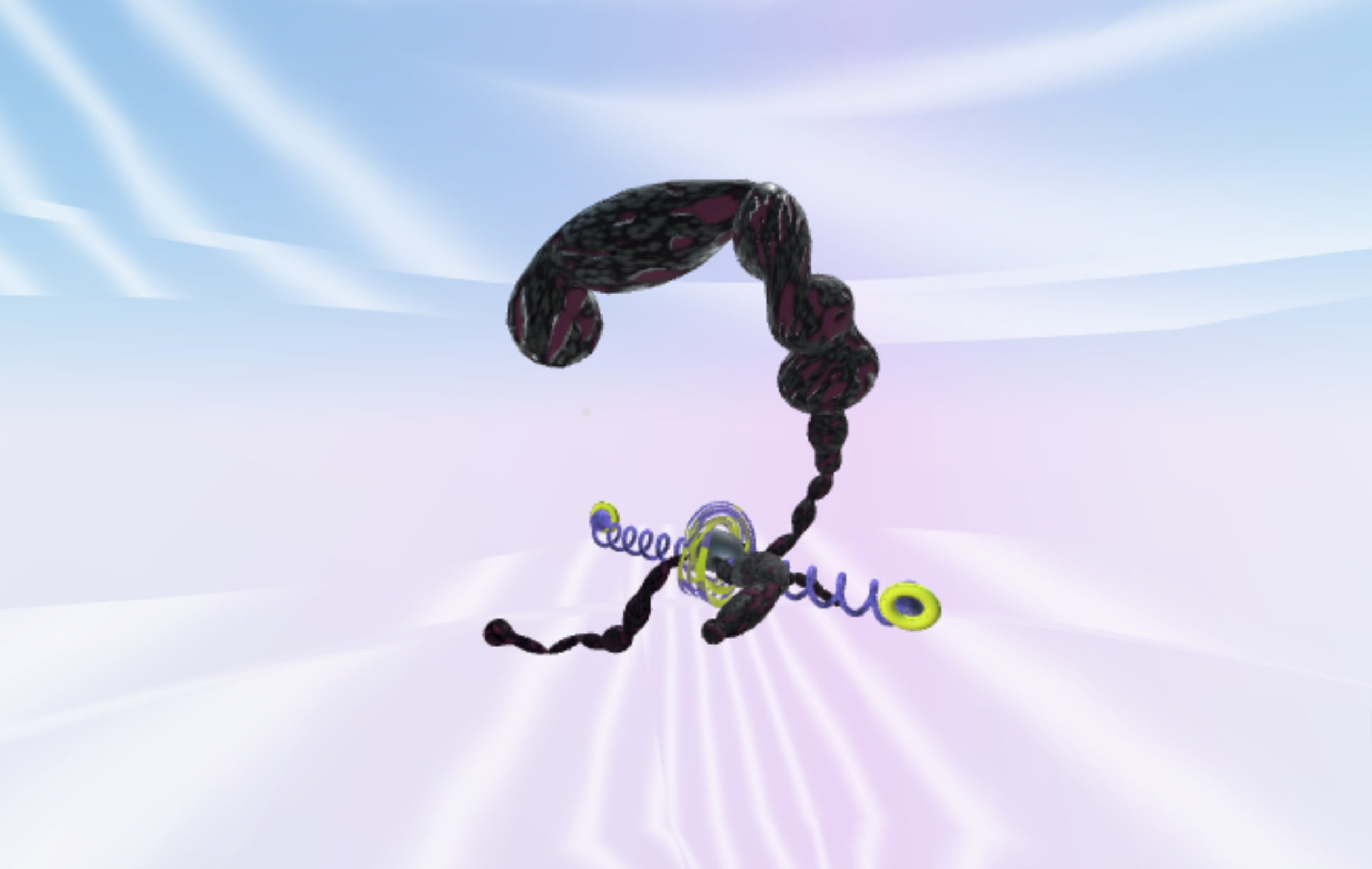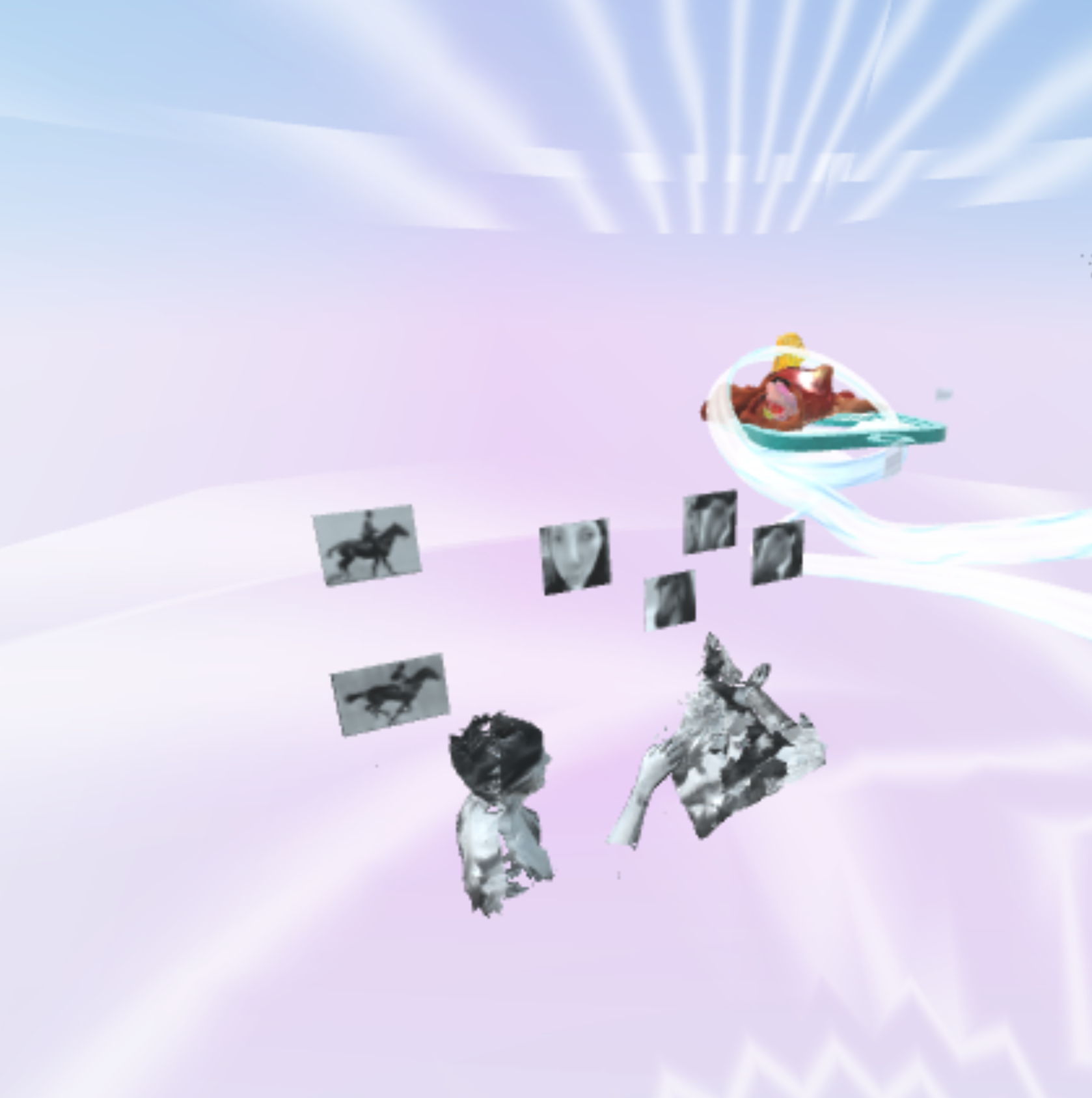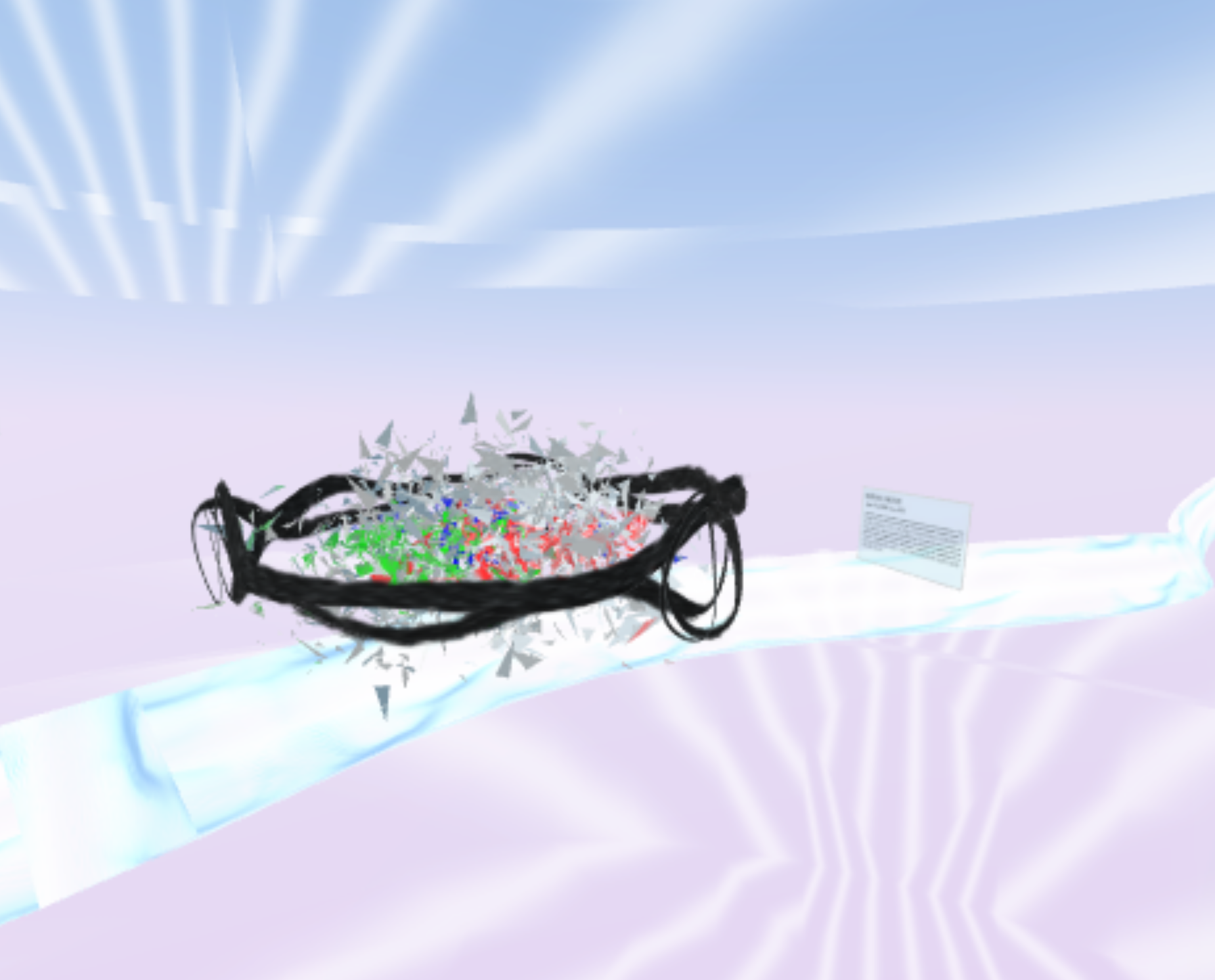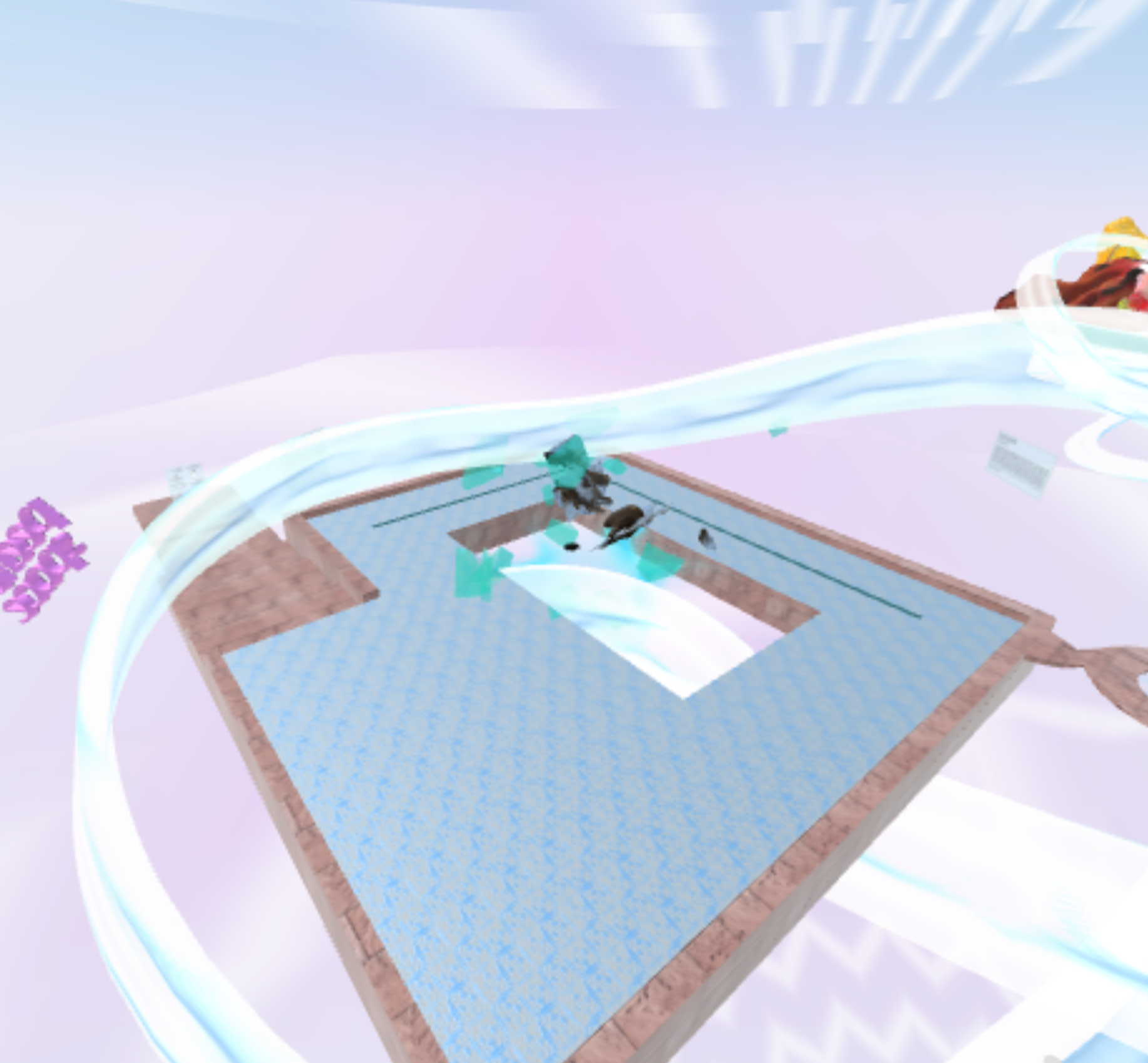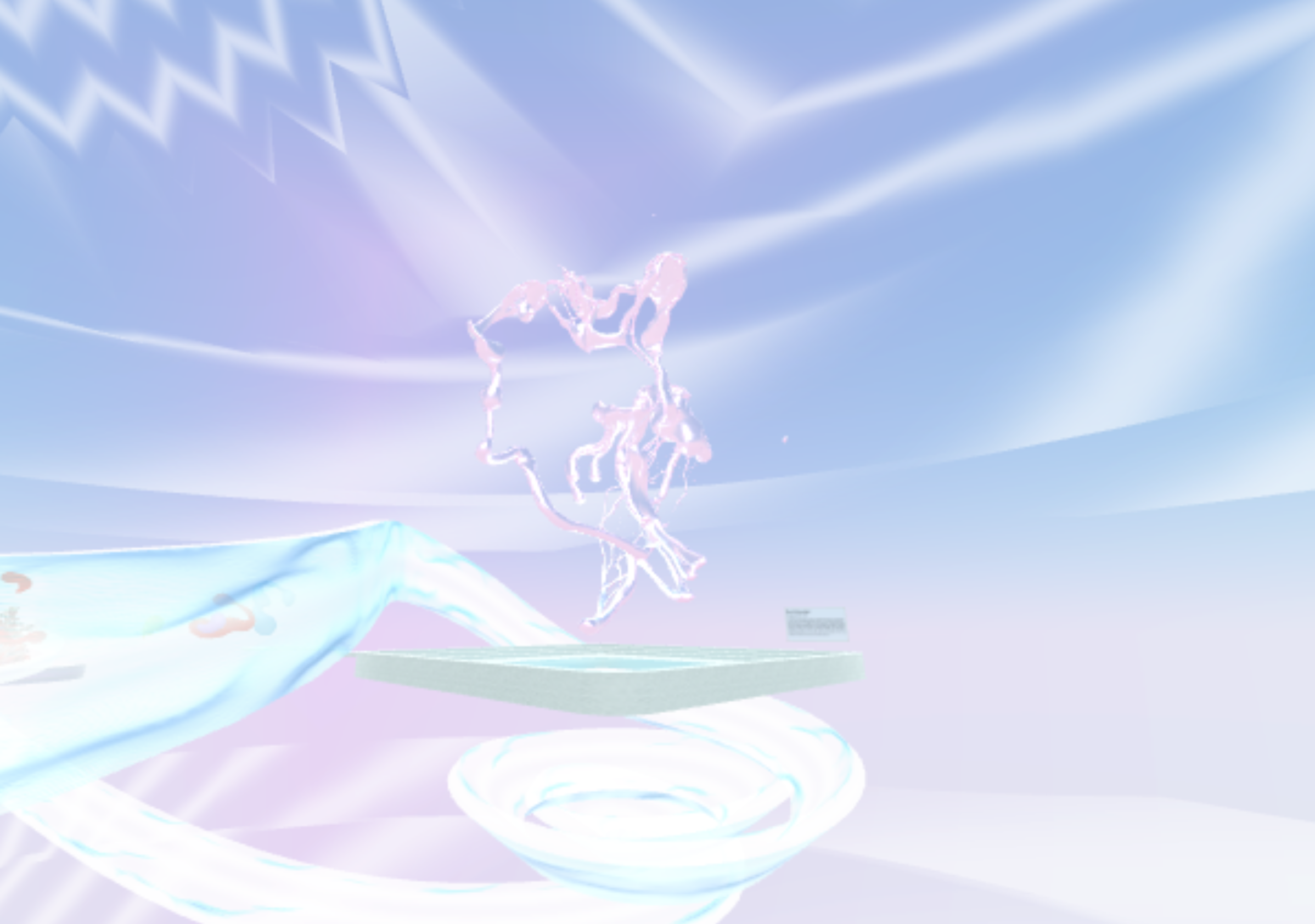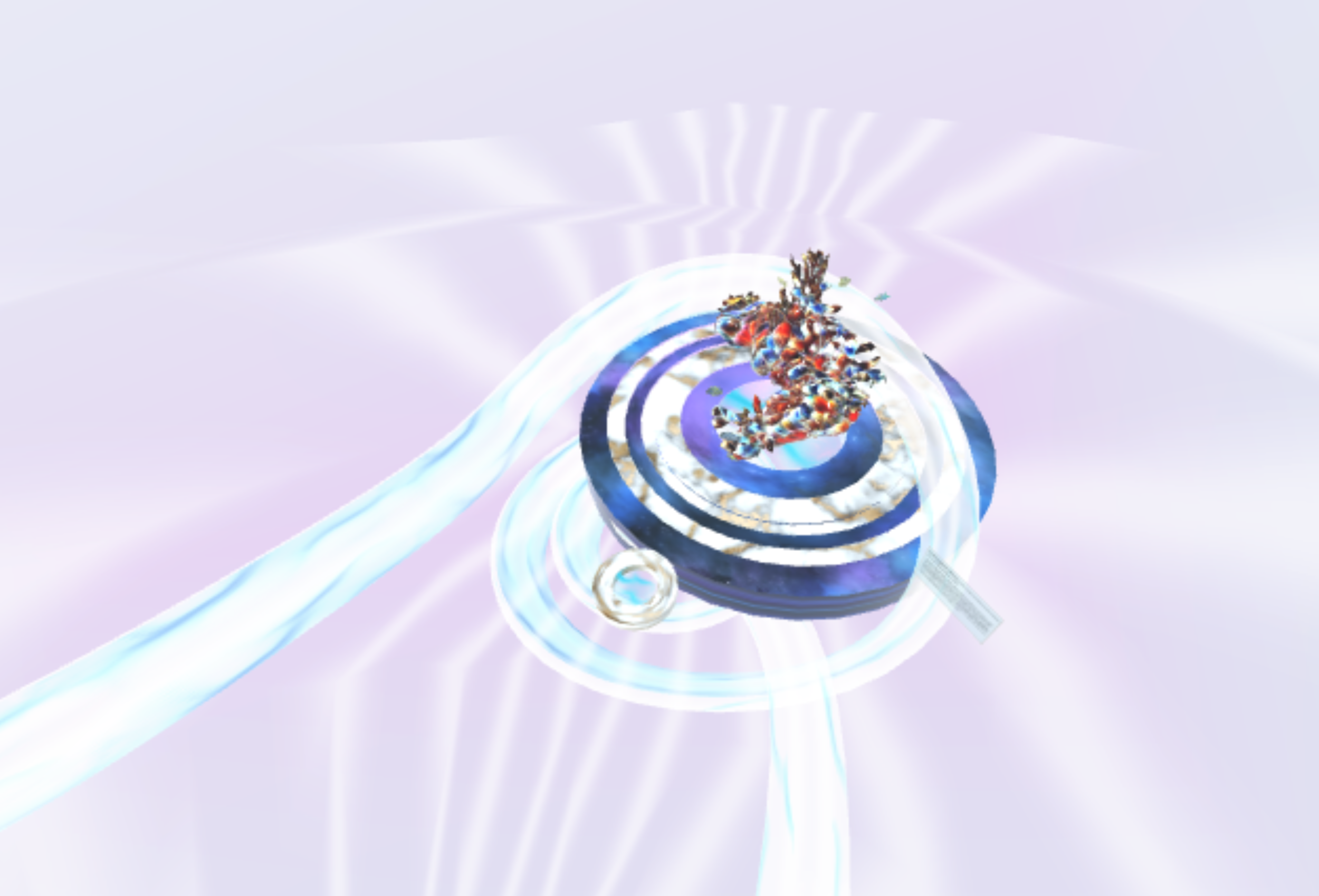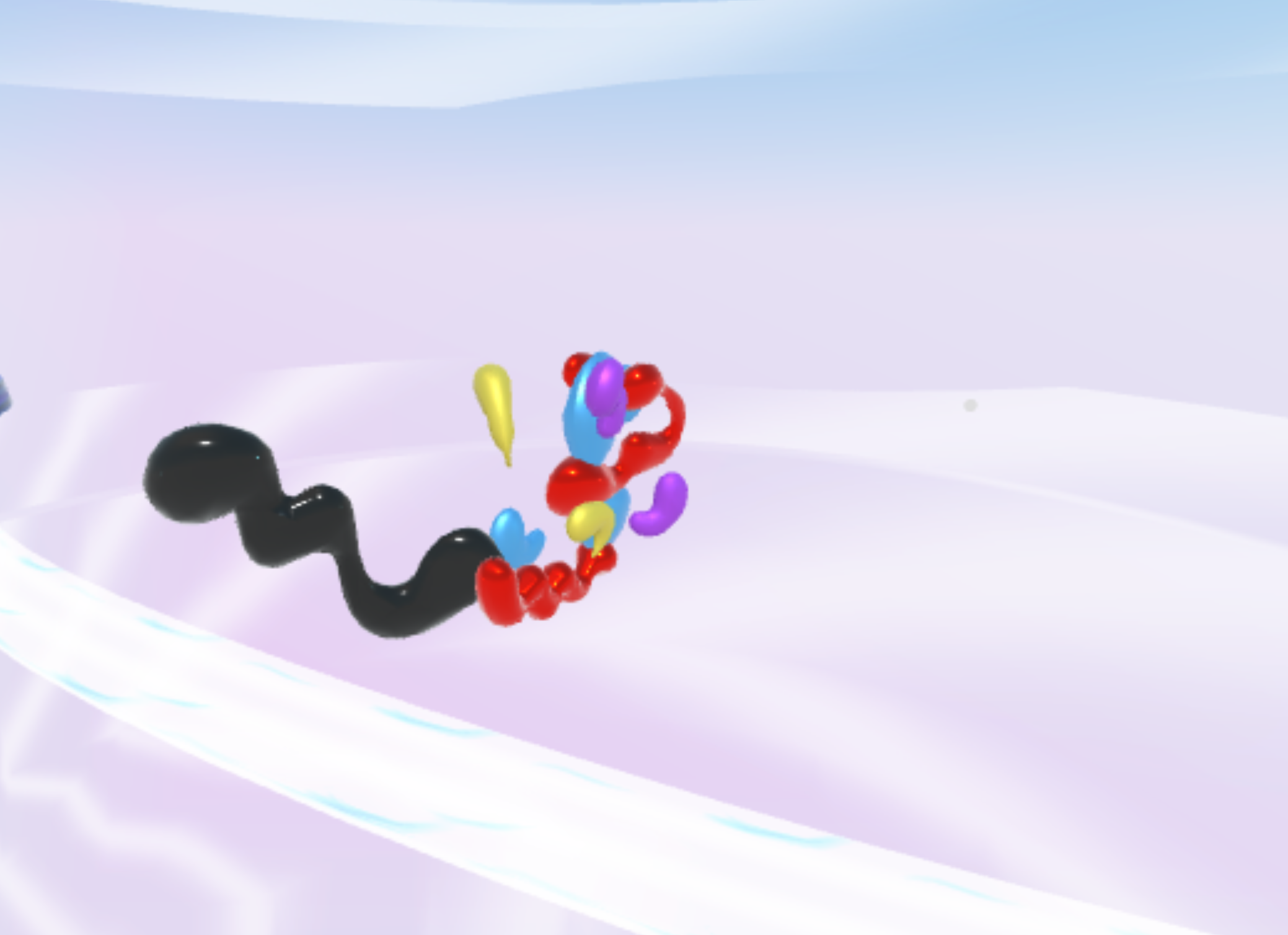With its Virtual Art Space, peer to space further develops the concept of their previous online exhibitions. In the virtual exhibition space on the open source platform Mozilla Hubs (until 2024), users will be able to experience online exhibitions spatially, ideally via virtual reality headsets to be fully immersed in the space, or via computer screens and tablets (Web VR). Users meet as avatars, interact and communicate in real time (Social VR). With the Virtual Art Space, peer to space establishes a new presentation format beyond the white cube to fully embrace the potential of the virtual realm independent from physical limitations. The open and dynamic structure of the floating islands allows to explore and engage with new forms of digital curating. As an integral part of the peer to space program, international group exhibitions in collaboration with different curators and art institutions will be realized. The inaugural exhibition (Im)Material Matter is curated by peer to space’s Peggy Schoenegge.
Spatial Design by Mohsen Hazrati
(IM)MATERIAL MATTER
October 28, 2021- May 31, 2024
Curated by Peggy Schoenegge
With works by Banz & Bowinkel, Entangled Others (Sofia Crespo and Feileacan McCormick), Mohsen Hazrati, Armin Keplinger, Nadine Kolodziey, Lauren Moffatt, Chiara Passa, Sabrina Ratté, Dagmar Schürrer
The exhibition within peer to space’s Virtual Art Space, (Im)Material Matter, curated by Peggy Schoenegge, is dedicated to digital sculptures, their material and matter. The works highlight the potential of sculptural artworks in the virtual realm. Beyond the restrictions of physicality, sculptures take on new shapes and forms.
The sculptural works float in the exhibition space. They do not need a bottom or plinth to stand on. This positioning makes them perceptible and accessible from every conceivable viewpoint, even from below and above. Their size can be freely determined. The 3D shapes of the sculptures are not static, but dynamic. Some consist of several parts moving freely in space. How the works are installed in the virtual art space would not be possible in the physical and creates a new approach to sculptures. As a result, they shift the parameters of the traditional definition of sculpture by deconstructing its solid matter.
The constitution of the space, the textures of the void as well as the shape of the sculptures simulate materiality. Their surfaces are reminiscent of physical material like metal, plastic, or clay. They hyper realistically allude to tangible materials. In the exhibition, the sculptures become permeable. Visitors can pass through and enter the inner sphere of the artwork. The dissolution of physical boundaries once again reveals the distinctive conditions of the virtual. The works oscillate between the material and immaterial, defining a matter of virtual materiality.
The artists examine and extend the traditional physicality of sculptures by incorporating the digital conditions and developing digital (im)materialities. The viewers encounter a new way of discovering and defining sculpture as an art experience. Immersed in the exhibition – ideally in a virtual reality headset – they fly around and through the artworks, experiencing the unique possibilities of the virtual space. Presented in the exhibition, the works convey a multi-layered picture of contemporary digital sculpture.
Banz & Bowinkel, Bodypaint VR 02, 2021
An abstract fluid entity floats in space, first appearing like plastic action paintings. For the work series Bodypainting, the artist duo uses recorded movements of a body performance in the studio. Via motion tracking, they translated the bodily action into three-dimensional patterns that now appears as an abstract, sculptural form in the virtual space. The work is shaped with different colors and textures, reminding us of glass or metal. This mix creates a dynamic play and combines digital materials, allowing us to directly experience the potential of the virtual medium and newly access movement as well as sculptures.
Entangled Others (Sofia Crespo and Feileacan McCormick), Beneath Neural Waves, 2021
The artist duo Entangled Others (Sofia Crespo and Feileacan McCormick) have created an artificial, aquatic ecosystem that explores biodiversity and relationships. The diorama of artificial life consists of sculptural fragments and specimens generated with deep learning. These objects are combined with similarly generated textures and imagery which attempt to address the complexity and interconnectivity of our biosphere. Through this speculative approach the artists use the virtual (space) as a starting point for exploring how to expand we imagine the future and what potential for positive change we might uncover.
Mohsen Hazrati, Upon Thy (RGB) tress, 2021
The work consists of glass-like components refracted into colored segments. If the viewers stand on one of the corners, the individual fragments compose words in red, blue and green. In his work, Mohsen Hazrati transforms characteristics of Iranian literature into a physical entity. Black hair is a frequently used metaphor of multiplicity and complexity in Iranian poems. He translated this metaphor into the shape of a fragmented sculpture, mirroring a multiplicity and complexity of its meaning. Hazrati thereby shapes a unique understanding of this metaphor, equally reflected in his work.
Armin Keplinger, ND-3601 (THE ND-Serial - Scultpure III, Excerpt), 2021
Armin Keplinger's sculpture is formed by thin, vertically needle-shaped objects whose arrange into a monolithic unit. When viewers move around the work, the lines create a moiré pattern, flickering and setting the work in motion. In this process, the materiality oscillates between transparency and solidity, evoking a novel experience of virtual sculpture. Keplinger creates a perception of scale and space, stability and fragility, abstraction and objectivity that breaks with visual habits. In the seemingly lawless environment of THE ND-Serial, the ultimate boundaries of virtual reality are gracefully and effortlessly extended.
Nadine Kolodziey, Trembling, 2021
Minimalist organic forms join and drift apart in a steady rhythm. Trembling shows the never ending and never fulfilled attempted to fuse its singular parts into one in the digital space. The floating parts refer to inner organs, hoping to become one body of work. Since the sculpture can never complete itself, the viewer is asked to accept a new performative sculpture dynamic. In this ongoing process, the sculpture constantly reshapes itself. In virtual space, the material has no fixed form, remains abstract and is flexible in shape. Kolodziey works at the immediate interface between reality and digitality, constantly playing with materiality and its simulation.
Lauren Moffatt, Time-Lapsing, 2021
Continuing in her collaboration with digital errors and artefacts, with Time-Lapsing Lauren Moffatt creates a sculptural video collage. She fuses contemporary 3D scans with digitised 16mm film material captured in 2014, Eadweard Muybridge's Horse in Motion cabinet cards and the Horse Head augmented reality lens from the platform Snapchat. A meme of this material showed parents activating the filter in front of their children in order to capture their terrified reactions. Moffatt works in an experimental and humorous way with two versions of her own image and flattens them into a continuum of imaging history of over 140 years. Time-Lapsing deconstructs and recomposes processes of ageing and transformation of images, of digital files and of human and animal bodies
Chiara Passa, From Still Life: AR Sculptures No 1, 2021
The sculpture presented is taken from Chiara Passa’s work Still life that analyses natural processes by investigating the contemporary definition of still life. By transforming physical materials such as glazed clay forms via photogrammetry into virtual space and digitally extending them, the artist creates a complex of relationships between virtual and physical materials, examining its understanding. A tension between appearance and reality emerges, inviting viewers to inspect the work closely by going inside. The artwork questions what is dead in nature in opposition to what is still alive in art history. Passa speculates on the understanding of landscapes, paintings and objects as well the human body.
Sabrina Ratté, Floralia, 2021
Florialia deals with a speculative future in which samples of then extinct plant species are preserved and displayed in a virtual archive. Through editing visual strategies, this archival space sporadically transforms under when interfered with memories emanating from the listed plants. The artist thereby reveals traces of a past that continues to haunt the present place. Floralia is a virtual simulation of ecosystems born from the fusion of technology and organic matter, where past and future coexist in a perpetual tension with the present. The work's digital materiality allows viewers to perceive how the ecosystems interact, while the its appearance allows them access.
Dagmar Schürrer, Cosmophonatic, 2021
The object is reminiscent of an organic living being, but also evokes associations of a machine or a communication tool. If the viewer approaches the two ends, they hear different soundtracks of a digitized everyday life collage of electronic sounds and a telephone ring. A viewer on one end waits while the other acts as a transmitter, apparently trying to establish a connection. Dagmar Schürrer explores digital materiality as a visually simulated surface and as a carrier of information, data and language. They are part of the material and thus of the sculpture. The work visualizes that the digital is not a closed space, but one point of connection in time and space.
With kind support by Stiftung Kunstfonds | NEUSTART KULTUR
